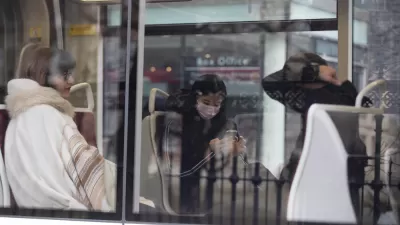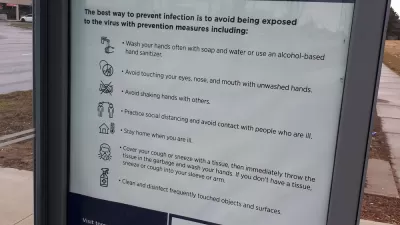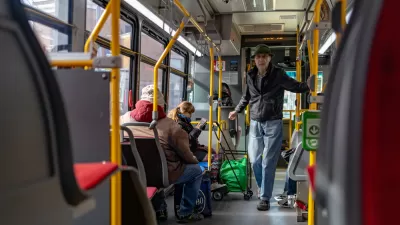The Canadian census reports that transit ridership in Toronto has increased, but population growth means more cars are on the road anyway.

The proposition of commuters in Toronto driving alone to work has declined 7 percent in the past decade, according to new census figures. Those walking, biking, or using public transit have correspondingly increased between 2006 and 2016.
Since no new subway lines have opened since 2002, a primary factor is increased density in the city, according to Statistics Canada. However, there are signs that the increase in transit usage may be leveling out, according to the Toronto Transit Commission.
At the metro level, the shift in commuting patterns has been similar. The provincial transit agency, Metrolinx, is proposing service expansion to increase train ridership further.
Among the significant amount of information released by the Census, it is noteworthy that although the proportion of commuters getting to work by car is down, the overall number of cars on the road has increased due to population growth overall.
FULL STORY: Share of Torontonians Taking Public Transit is on the Rise, While Reliance on Cars Declines

Alabama: Trump Terminates Settlements for Black Communities Harmed By Raw Sewage
Trump deemed the landmark civil rights agreement “illegal DEI and environmental justice policy.”

Study: Maui’s Plan to Convert Vacation Rentals to Long-Term Housing Could Cause Nearly $1 Billion Economic Loss
The plan would reduce visitor accommodation by 25% resulting in 1,900 jobs lost.

Why Should We Subsidize Public Transportation?
Many public transit agencies face financial stress due to rising costs, declining fare revenue, and declining subsidies. Transit advocates must provide a strong business case for increasing public transit funding.

Paris Bike Boom Leads to Steep Drop in Air Pollution
The French city’s air quality has improved dramatically in the past 20 years, coinciding with a growth in cycling.

Why Housing Costs More to Build in California Than in Texas
Hard costs like labor and materials combined with ‘soft’ costs such as permitting make building in the San Francisco Bay Area almost three times as costly as in Texas cities.

San Diego County Sees a Rise in Urban Coyotes
San Diego County experiences a rise in urban coyotes, as sightings become prevalent throughout its urban neighbourhoods and surrounding areas.
Urban Design for Planners 1: Software Tools
This six-course series explores essential urban design concepts using open source software and equips planners with the tools they need to participate fully in the urban design process.
Planning for Universal Design
Learn the tools for implementing Universal Design in planning regulations.
Smith Gee Studio
Alamo Area Metropolitan Planning Organization
City of Santa Clarita
Institute for Housing and Urban Development Studies (IHS)
City of Grandview
Harvard GSD Executive Education
Toledo-Lucas County Plan Commissions
Salt Lake City
NYU Wagner Graduate School of Public Service





























